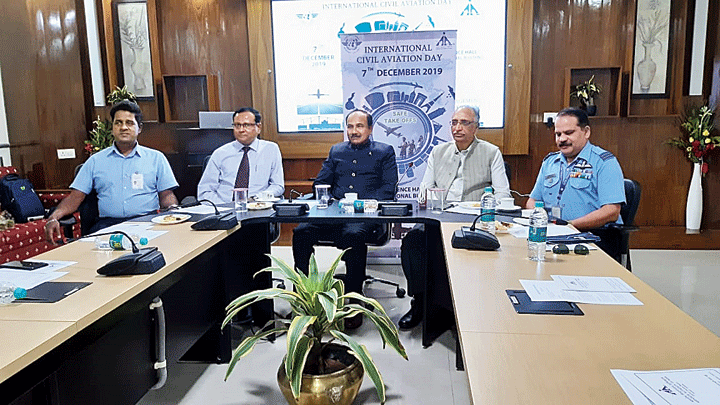Frequent pre-monsoon storms or kalbaisakhi test the skill of pilots who are left with little time to prepare for a take-off or touch down, said pilots and aviation veterans at a seminar in the city on Saturday.
They said the lack of knowledge about the exact location of the storm and the forecast that arrives only a few hours before kalbaisakhi hits a place made the situation difficult for pilots to handle.
A kalbaisakhi is a fast-developing thunderstorm covering roughly a 50sq km area and it usually happens during late afternoon or evening during the months between March and May, a retired professor of geography said.
A kalbaisakhi develops within a short period and often its development remains unknown even a few hours before the storm lashes a place, they said. It is this sudden development that is worrying and challenging for a pilot, said an atmospheric scientist.
Pilots and aviation veterans were speaking at a conference held to discuss the challenges of a safe take-off.
Nandita Halder, a pilot with Air India, said they had to monitor the thunderstorm closely to avoid difficulties after take-off.
“Kalbaisakhi is typical of Calcutta and Dhaka airports. The fast-changing nature of a kalbaisakhi is a challenge for any pilot,” said Halder, who spoke at Saturday’s conference organised by the Calcutta airport’s air traffic management division.
She said all that pilots get from the Met office was wind speed and direction of the kalbaisakhi. This when the understanding and the efficiency of a pilot comes into play to keep the flight safe and away from the zone of the storm’s influence, she said.
“It is not possible for the Met office to give exact location of the kalbaisakhi,” she said.
Halder said hailstorms that accompany a kalbaisakhi made things more dangerous.
“Hailstorms have the potential to damage an aircraft and even crack the windshield. So a pilot has to be careful so that the flight doesn’t come near a kalbaisakhi’s influence zone,” she said.
The speed of a kalbaisakhi usually remains in the range of 50-80kmph, said an atmospheric science expert.
Such high wind speed, along with ice crystals, which fall as hail, hitting an aircraft could trigger serious damages to an aircraft, she said.
“It is the storm’s nature to grow and develop within a few hours that makes it challenging for pilots. A pilot who is preparing for a take-off at 5.30pm often doesn’t know till 3pm that a Kalbaisakhi could happen in the evening,” said Ranjan Basu, who taught geography at Calcutta University.
Another pilot said the short time they get to prepare for a take-off in the face of a storm was tough.
“The mental preparation for flying is important,” he said.
During an aircraft’s journey, a pilot has to worry about the weather twice — during take-off and landing.
“It is during take-off and landing that an aircraft passes through the troposphere. For the rest of the journey the aircraft passes through the stratosphere where weather aberrations are not found. A pilot needs to know the accurate weather of a place for safe landing and taking-off,” said Basu.











